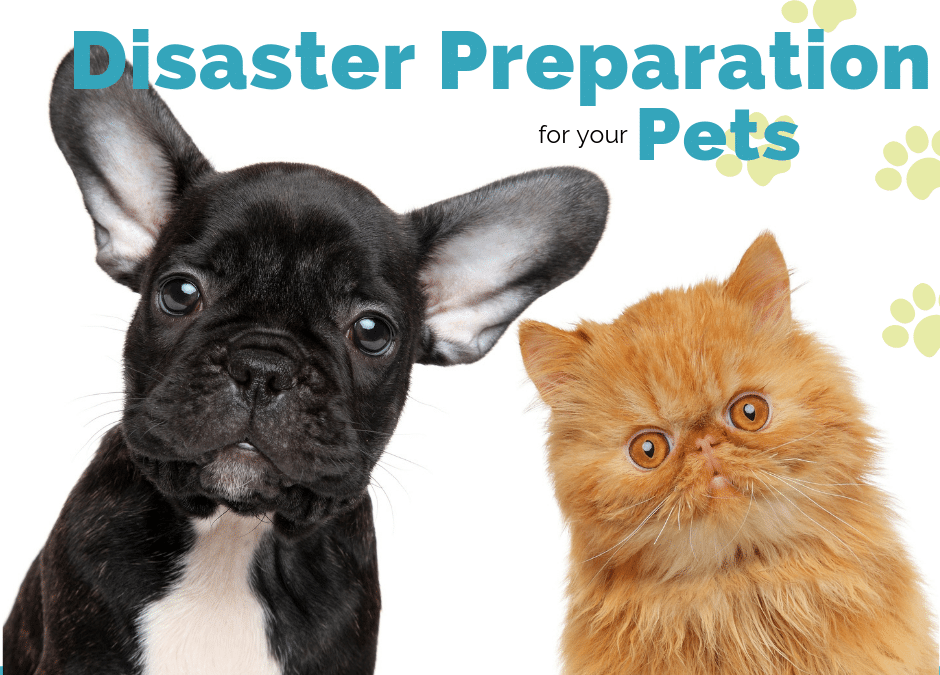
by California Casualty | Auto Insurance Info, Pets, Safety |
Our pets are precious members of the family. We take them on adventures and shower them with treats and love. However, when it comes to disaster situations, our fur babies are often an after-thought, and sadly, many suffer and are left behind when a natural disaster hits.

September is National Preparedness Month. Each year we are reminded to prepare ourselves for emergency disasters in our home and communities. So, while you get your emergency plans in place, don’t forget to include your animals!
Take these actions and precautions before a calamity strikes to put your mind at ease and save your pet’s life.
- Have an evacuation plan that includes your pet and it’s necessities. Include food, leash, medications, a blanket (with your scent), water, and copies of vet records and vaccinations.
- Bring your pet inside. If you need to evacuate, have a crate or duffel on hand that you can easily transport them in.
- Place a rescue alert sticker on home door or window. This should be visible to rescuers, in case you are unable to get home. Available online, at pet stores, veterinarians, or from the ASPCA.
- Microchip your pets and update collar tags. Make sure the microchip is registered and up-to-date with your current information.
- Keep in mind many evacuation shelters do not take pets. Research pet-friendly hotels, shelters, and family/friends who will take in you and your pet in a disaster.
- Carry recent pictures of your pet. In case you get separated, keep a good photo of them sitting and standing for size/coat reference.
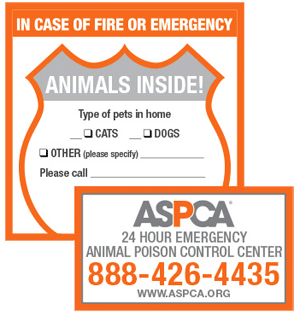
Having a disaster preparation plan in place for your pets will play a key role in saving their life in the event of an emergency. If you need help putting a plan in place, contact BringFido’s Canine Concierge. They will contact hotels and shelters across the nation to help you find somewhere for your pet. Plus, they will even give you advice on disaster preparation for pets!
Remember, pets can sense anxiety and become nervous, especially during high stress times like emergencies. It is important to give them TLC and let them know they will be ok.
This article is furnished by California Casualty, providing auto and home insurance to educators, law enforcement officers, firefighters, and nurses. In the event of a disaster know you and your pet are taken care of by adding Pet Insurance by Pets Best to your existing California Casualty policy and save up to 90% on all emergency vet bills. Get a quote at 1.866.704.8614 or www.calcas.com.
For more information visit:
https://bit.ly/34xLENY
https://bit.ly/34qK2Ft
https://bit.ly/2MTAldi
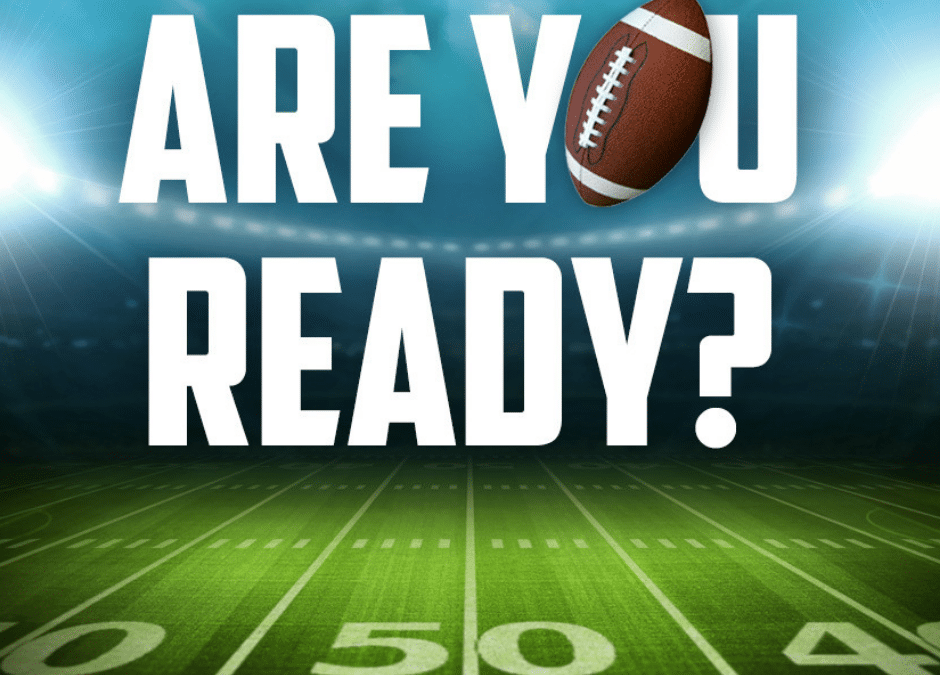
by California Casualty | Homeowners Insurance Info, Safety |
It’s officially the best time of the year. Football season!
Everyone knows that football is not the same without watch parties and tailgates! You’ve got the cold drinks, the savory BBQ, and the big screen ready for friends and family to come over and watch your favorite teams all season long. However, there could be one thing missing. Homeowners or renters insurance.
Let’s face it, accidents happen. Especially when you have a rowdy crowd on your hands and your team is deep in the 4th quarter. Homeowners and renters insurance protects you if one of your guests stumbles into your flat screen and it falls to the floor. Or, if someone trips and crashes through that glass table in the living room. With the proper coverage, you won’t be penalized.
If something in your home gets broken or stolen while you have people over, your policy will cover it. But, if you have high-value items that could get damaged or go missing like jewelry, antiques, collectibles, or furs, you will need to add extra coverage – scheduled personal property. Accidents are inevitable, but the best way to avoid losing or having to replace your collectibles is to put them in a safe place, away from the crowd when you are hosting events. Think locked room or basement.
What if Someone Gets Hurt in My House?
Any time you are a host, especially for a high energy crowd, there’s the risk that someone may accidentally get injured. Whether it’s from a touchdown dance celebration or tripping on a rug, homeowners and renters insurance with personal liability coverage will cover it.
If you are serving alcohol, be aware, the Insurance Information Institute (III) warns that hosts can be liable if others are hurt by anyone driving from your party while intoxicated. It’s called the social host liability law. Personal liability coverage will also help in this situation by covering payments of medical bills and lawsuits from someone who was hurt on or off (leaving) your property. There are limits, so you talk to your insurance advisor about an umbrella policy, which will provide much greater coverage.
What Else Can I Do?
Here are some important hosting safety tips you can use during football season:
- Talk with your insurance advisor about any policy exclusions or limitations before you throw a party
- Install proper lighting inside and outside of your home
- Remove valuable items and objects that could cause tripping or falling
- Consider holding your getting together at a restaurant or bar instead
- Have someone sober in charge of monitoring guests
- Encourage the use of Uber and designated drivers
- Lock up pets in a separate location or outside
- Make guests who’ve had too much to drink turn over their keys
Make sure you’re on the winning team if you are hosting a football party. Contact a California Casualty advisor today to make sure your homeowners or renters insurance will protect you in a liability blitz. Call 1.866.704.8614 or visit www.calcas.com.

by California Casualty | Auto Insurance Info, Safety |
When an emergency or natural disaster strikes, it’s important to have an emergency preparedness kit stocked and ready to go with basic items that meet your family’s particular needs. Building an emergency kit is quick and easy. Plus, it could save your life.
It is recommended that you pack enough items to last you (and each member of your family) at least 72 hours. Start with a sturdy backpack or duffel bag that can hold days worth of supplies. Be sure to put non-waterproof items going into your kit in air-tight plastic bags before putting them in your backpack or duffel. Below is a complete list of basic items that should be in your emergency kit and additional items that you could add based on your families needs.
Basic Items for Your Emergency Kit:
- Non-Perishable Food Items
- Toilet Paper
- Bottled Water
- First Aid Kit
- Personal Medications.
- Flashlight
- Cash & Credit Cards
- Multi-Tool with a Can Opener
- Wrench or Pliers Kit (to turn off gas/water lines)
- Extra Clothing.
- Blankets
- Disinfectant Wipes
- Matches or Lighters
- Important Documents (ex. deed/lease, passport, birth certificate, insurance policy, emergency contact information)
- Whistle (in case you get trapped).
- Batteries
- Extra Keys
- Extra Chargers
- Battery Powered NOAA Weather Radio
- Feminine Hygiene Products.
Download our Basic Emergency Kit Checklist Below:
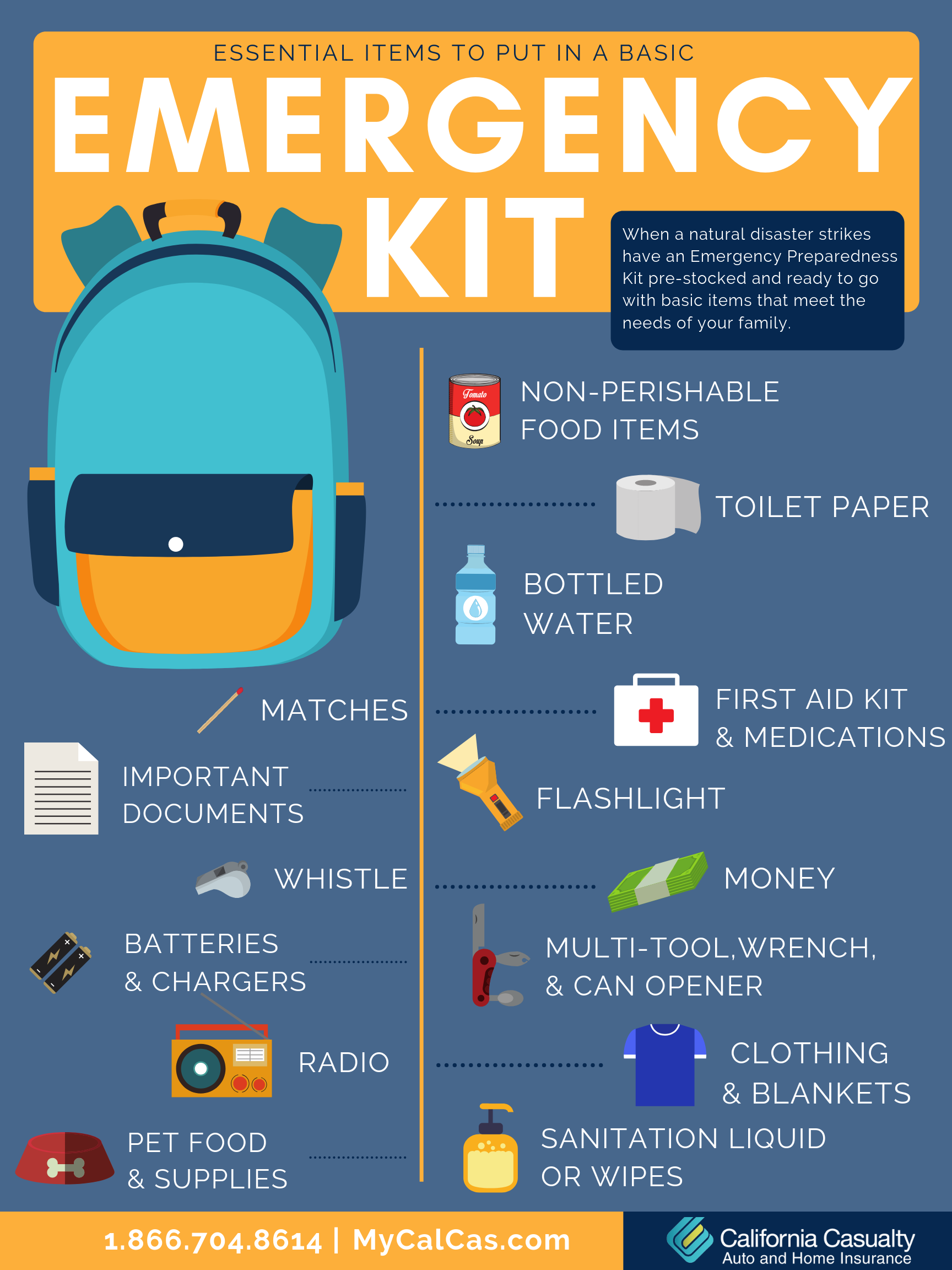
Additional Items for Your Emergency Kit:
- Pet Food & Supplies (food, litter, collars/leashes)
- Baby Supplies (formula, diapers, rash cream).
- Non-Prescription Medication
- Liquid Bleach (to disinfect water and/or cuts).
- Paper/Plastic Cutlery
- Books & Board Games
- Rain Gear (umbrellas, ponchos, jackets)
- Work Gloves.
- Extra Set of Glasses
- Extra Shoes
- Scissors
- Maps.
Once you have your emergency kit assembled, put it in a secure, easy to reach spot inside your home. Be sure other members of your household are aware of the location of the safety kit. You should check your kit every 6 months to make sure all of your items are up-to-date and not expired.
This article is furnished by California Casualty. Get a quote by calling 1.800.800.9410 or visit www.calcas.com.
For more information please visit:
https://bit.ly/34kHvNi

by California Casualty | Homeowners Insurance Info, Safety |
Disaster can strike at ANY time during ANY season. So, each year we are here to remind you to prepare for disaster situations in your home and communities.
BE PREPARED: Before an emergency or natural disaster strikes, here are 10 things you can do:
- Plan and save for the unexpected financially.
- Sign up for emergency alerts in your area.
- Map out and practice using several different evacuation routes.
- Have a safe location planned for shelter if your town is evacuated.
- Plan for your pets and know where they will stay if you are evacuated. Here are some pet-friendly hotels.
- Have a plan where you and family members will meet and how you will communicate if you become separated.
- Create an emergency kit, that meets your family’s particular needs.
- Complete a home inventory and document all of your belongings (clothing, mattresses, bedding, kitchen appliances, furniture, electronics, etc.).
- Back up important phone contacts and photos physically or on The Cloud.
- Check your insurance coverage with an advisor, to make sure you’re adequately covered or add protection (ex. Home, Renters, Auto, Flood, Earthquake, Floater, and Umbrella).
BE READY: If you need to evacuate:
- To find local shelters download the FEMA app, text SHELTER and your ZIP code to 43362 (ex. SHELTER 12345), or visit the American Red Cross’ website.
- Contact California Casualty as soon as possible and save all receipts for living expenses, such as hotels, meals and other essentials.
- Monitor local media about conditions, further evacuations, or when it might be safe to return home.
BE SAFE: When you return home, there are many potential dangers, such as:
- Dangerous toxins, and debris
- Mold
- Gas leaks
- Electrical shock
- Poisonous snakes or other animals
- Structural instability and collapse
- Sewage and chemical tainted water
GET HELP: If you need recovery help afterward:
Though it is National Preparedness Month, it is important to remain prepared every month of the year. An emergency or natural disaster can strike at any time or place; and if it does, please remember, you are not alone. California Casualty is there when you need us most, to help make sure you and your family are covered.
This article is furnished by California Casualty, providing auto and home insurance to educators, law enforcement officers, firefighters and nurses. Get a quote at 1.866.704.8614 or www.calcas.com.
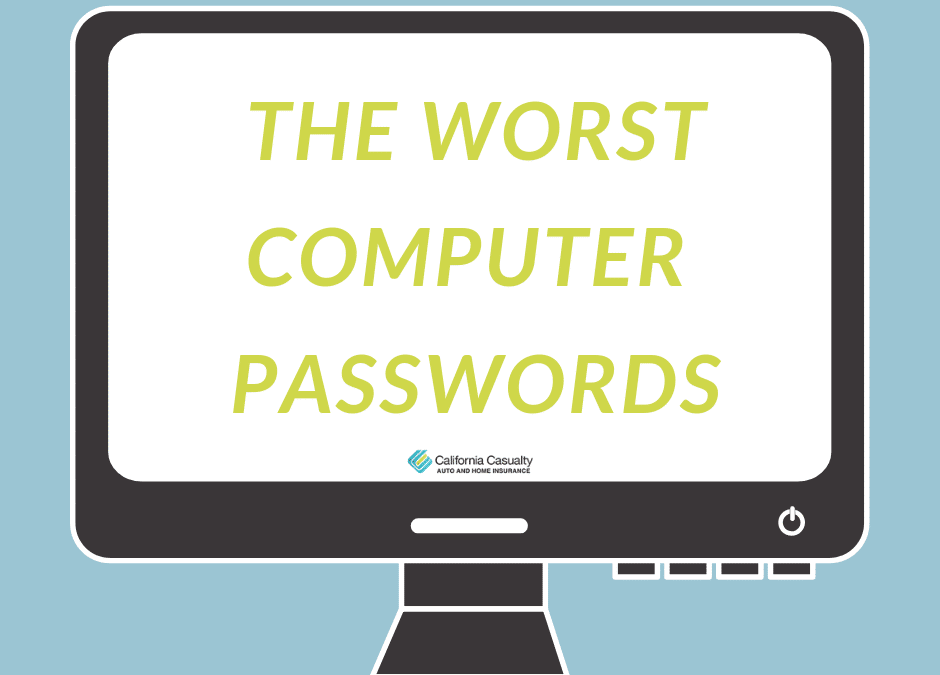
by California Casualty | Safety |
Keeping track of all our security passwords and codes is a pain. There’s one for the credit cards, a few for work, and a half dozen others for everything from the online bill paying to our social media accounts.
Since it’s become such hassle, all too many of us are using an easy-to-remember password that is making it very easy for cyber-crooks to breach our security and have access to our bank accounts and other important personal information. In the US alone there is a hacker attack every 39 seconds. That is why creating a strong password that is easy for you to remember, yet difficult for a hacker to guess is so important.
When you create a password to protect your personal information please avoid using:
- 123456
- password
- 123456789
- 12345678
- 12345
- 111111
- 1234567
- sunshine
- qwerty
- iloveyou
These passwords have been named “worst passwords of the year 2018” and many of them have been on the worst list for YEARS. Using these, and others like football, abc123, and 654321 (also on the list), means you are making it too easy for hackers and criminals to compromise your accounts.
So, what’s the key to creating a complex, secure password? Use one that employs 12 characters or more with a mix of symbols, letters, and numbers.
To avoid having one of the worst passwords, follow these password creation tips:
- Create passwords with as many letters, symbols, numbers and mixed case letters as possible
- Use mnemonic tricks to remember your passwords
- Store your passwords in a safe place that’s not on your computer
- Use different and unique passwords for important accounts
- Set up your password recovery options and keep them up to date
The United States Computer Emergency Readiness Team, part of the U.S. Department of Homeland Security, says a secure password should look something like this: Il2pBb3x!. The sequence comes from, “I like to play basketball three times a week,” just changed to simple symbols. Or think of a word that only has significance to you, change a few letters to make them capital, make some letters into symbols, and add in a long number. Ex. m@VEr1cK5991
And, if that all seems too complicated, there are free online password generator internet sites that will do the hard work for you. But once you’ve created a nearly full-proof password, your work is still not done. Experts advise that passwords need to be changed often, possibly once a month or quarter.
California Casualty also offers an added layer of protection; every auto and home insurance policy comes with free ID Theft 911 protection, which comes with ID theft resolution service. Contact an advisor for more information or a free policy review at 1.866.704.8614 or visit www.calcas.com.
For more information visit:
https://bit.ly/33NnhLE
https://bit.ly/33SYkP4
https://bit.ly/33UV59O
https://bit.ly/2NCNyqD
https://bit.ly/33SZs5g
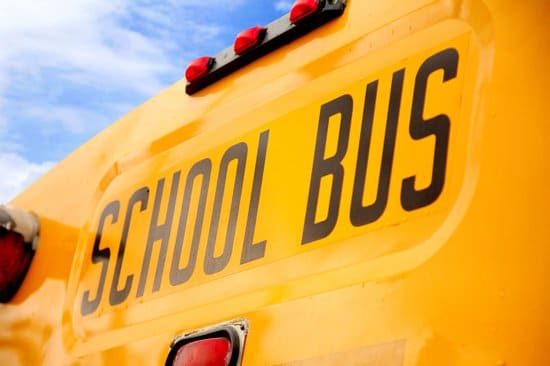
by California Casualty | Safety |
The hustle and bustle of the first days of the new school year can get a little crazy. Kids are racing to see their friends, buses are crisscrossing the area picking up and dropping off students and hurried parents are trying to drop their kids off before they have to head to work. Paying attention often goes by the wayside.
This is why it’s more important than ever to practice extreme caution around school zones and neighborhoods.
The National Safety Council warns that more children are hit by cars near schools than at any other location. That’s why they ask that drivers:
-
- Don’t double park because it blocks visibility
- Don’t load or unload children across the street from schools
- Carpool to reduce the number of vehicles at school
- Put down cell phones and other mobile devices
Other safety tips to prevent auto-pedestrian injuries around schools include:
-
- Not blocking crosswalks when stopped at a red light or making a turn forcing pedestrians to go around you; this could put them in the path of traffic
- Always stopping for school crossing guards
- Using extra caution to look out for children at bus stops, school zones, playgrounds and parks and in all residential areas
- Never passing a vehicle stopped for pedestrians
- Remembering that pedestrians have the right of way
And to prevent distracted walking and texting accidents, students are reminded to keep their head up and phone down and:
-
- Never walk while texting or talking on the phone
- Always move out of the way of others and stop on the sidewalk to text
- Never cross the street while using an electronic device
- Do not walk with headphones on
- Be aware of their surroundings
- Always walk on the sidewalk if one is available; if a child must walk on the street, he or she should face oncoming traffic
- Look left, right, then left again before crossing the street
- Cross only at crosswalks
Remember, the first days of school can be a dangerous time for excited students. Safety experts stress that we all need to slow down near school zones, wear seatbelts, leave early so we aren’t rushing and never drive distracted (texting, eating or drinking, horsing around with passengers or adjusting the radio or adjusting the navigation system).
This article is furnished by California Casualty, providing auto and home insurance to educators, law enforcement officers, firefighters, and nurses. Get a quote at 1.866.704.8614 or www.calcas.com.









